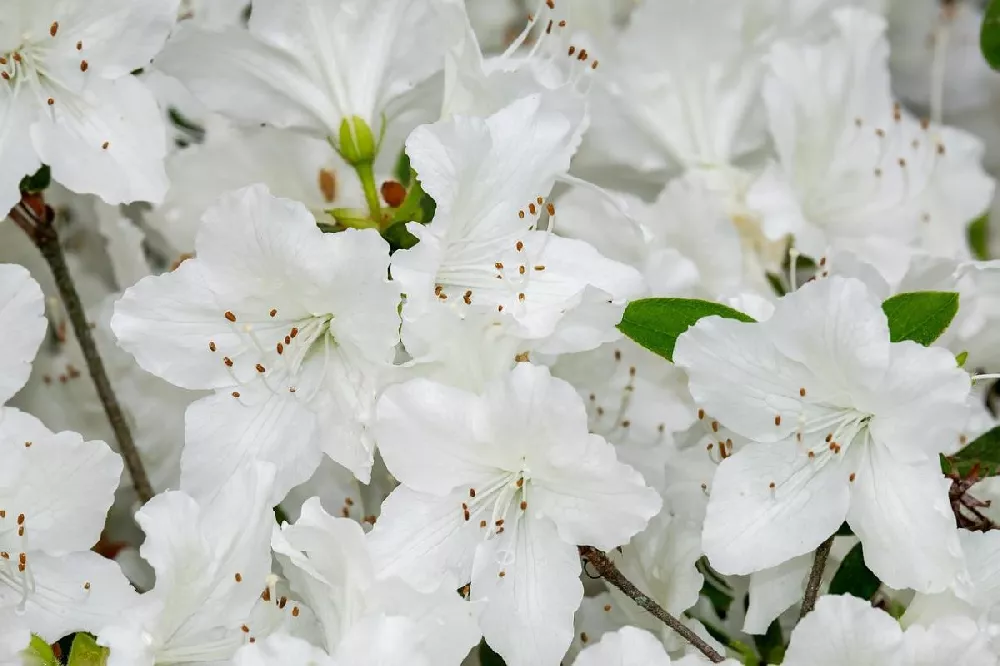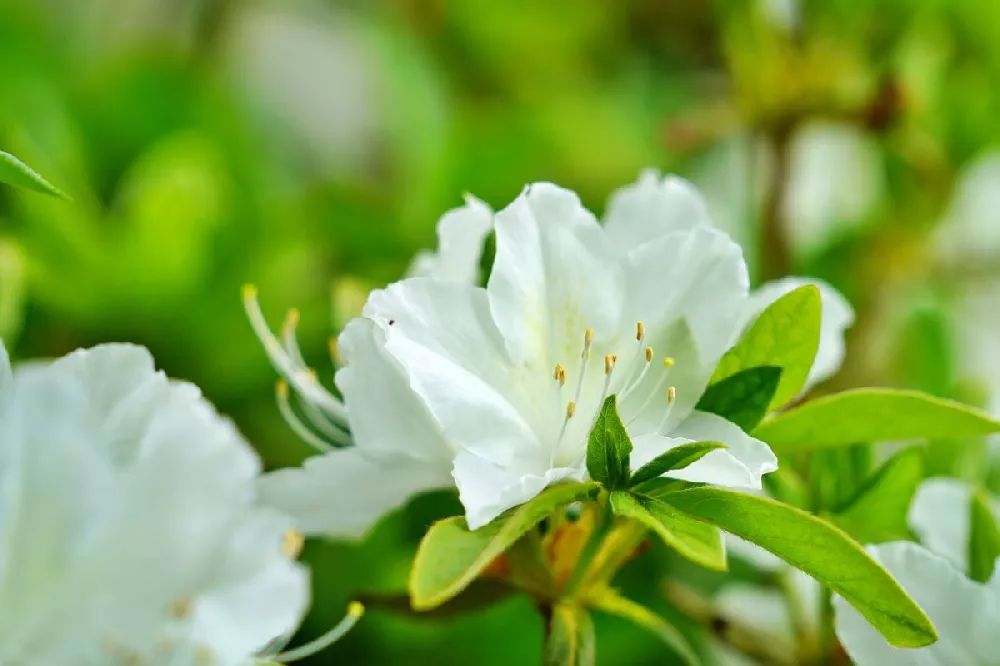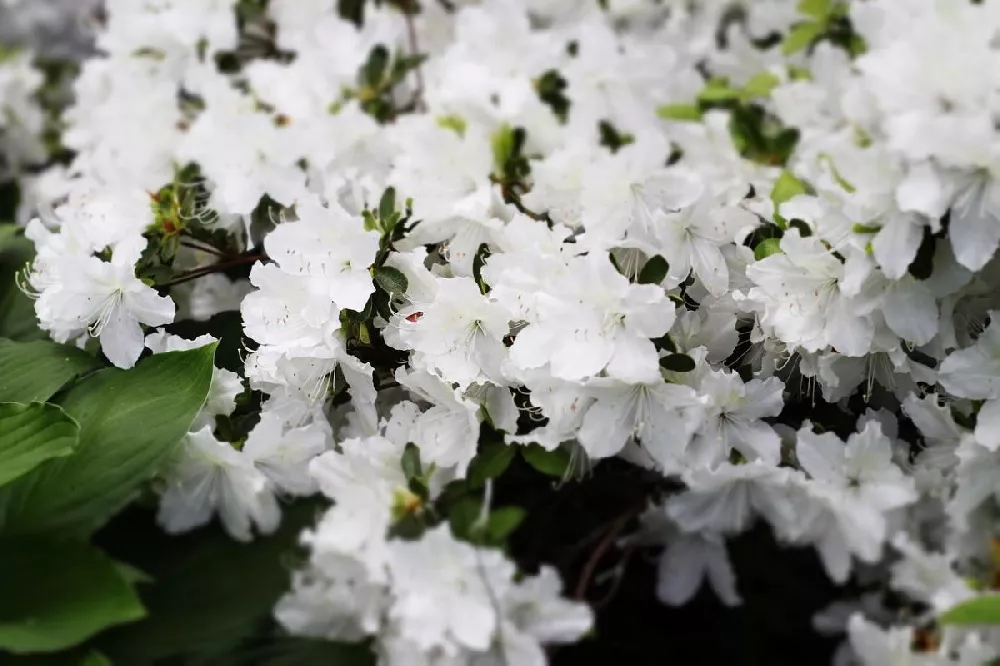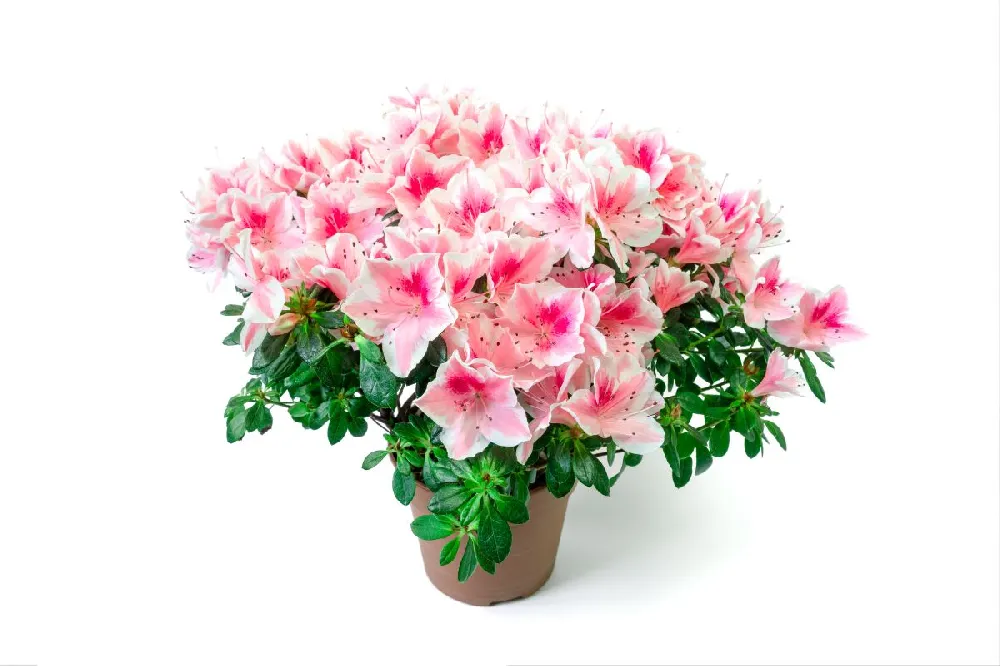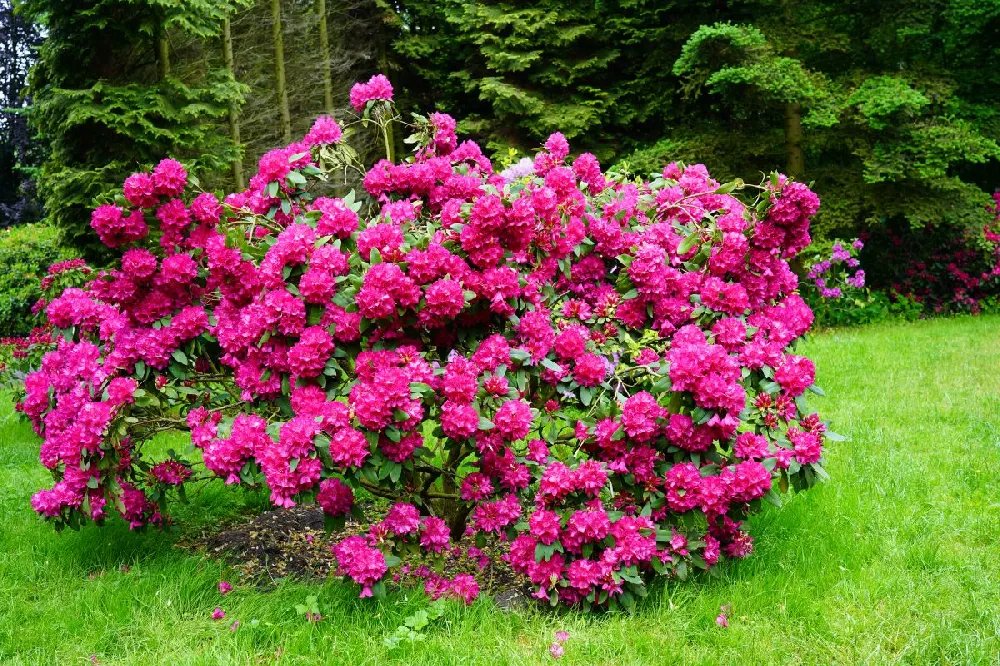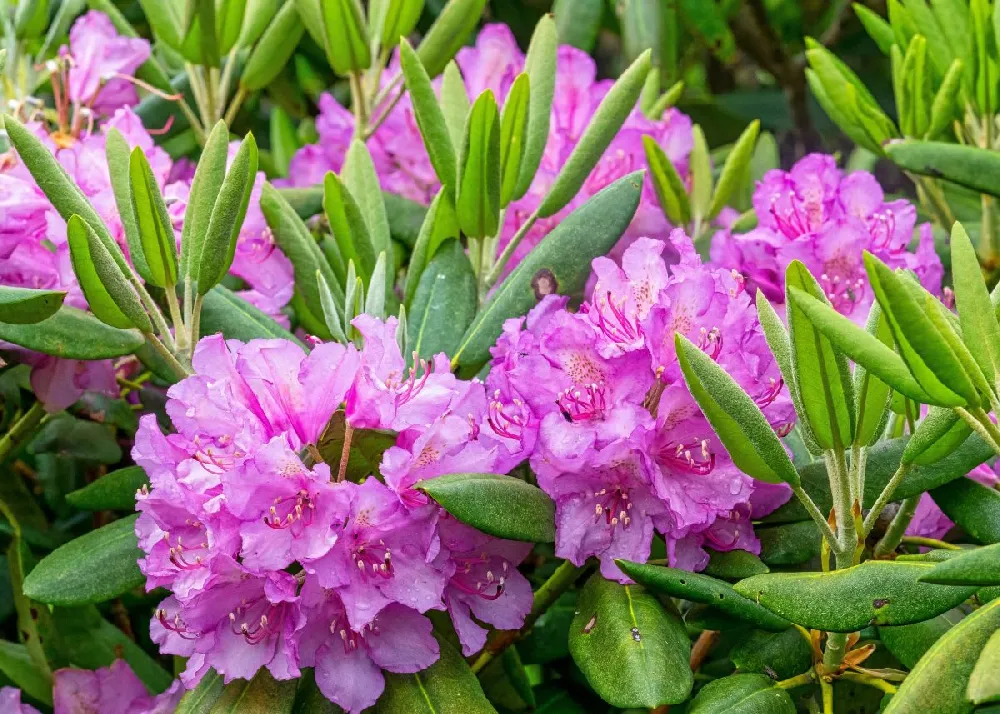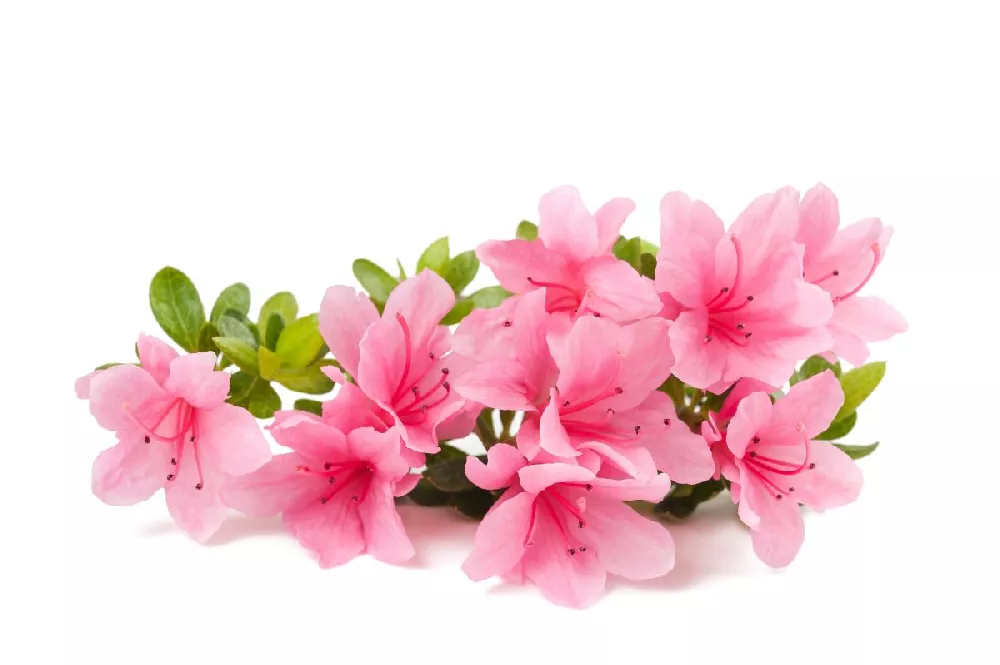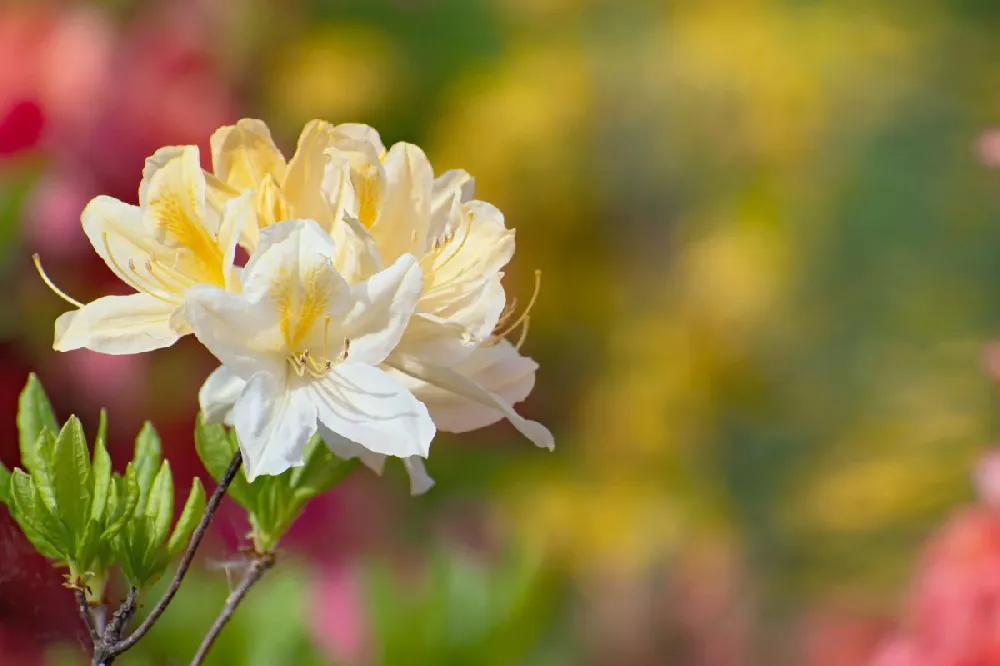Delaware Valley White Azalea for Sale - Buying & Growing Guide
- Ships in 1-2 days
- 1-Year Warranty Eligible
- Pots or accessories are not included unless specified in the product options.
Shipping Details:
Once your order is shipped, you’ll receive an email with a tracking number and estimated delivery date. Most orders ship immediately, but some items are seasonal and may only ship in spring or fall. These products are noted on the website.
Few flowering shrubs have a floral display that can compare to that of the Delaware Valley White Azalea. This cultivar, Rhododendron 'Delaware Valley White,' blooms in spring with enough white flowers to cover the entirety of this shrub. Each flower also gives off a mild but pleasant scent that will soon fill your garden. The Delaware Valley White Azalea is also a smaller cultivar, reaching just about four feet in height and spread, meaning that you should have no problem fitting it into planting beds of nearly any size.
- Copious amounts of beautiful white flowers
- Moderate size is easy to maintain and fits into smaller planting areas
- Blooms add a subtle but pleasing scent to your garden
Plant Care
Sunlight

Typically grows best in partial shade but will often perform well in full sunlight.
Watering
Water a few times per month during the growing season. Avoid waterlogged soils.
Fertilizing

Fertilize multiple times during the growing season with a balanced, acidic fertilizer.
Planting and Care
Planting instructions
One of the most important factors when choosing a growing location for a Delaware Valley White Azalea is soil drainage. You should never plant this cultivar in an area where the soil is heavy and fails to drain excess water efficiently. This plant is less picky about sunlight, as it can grow in both full sun and partial shade. To plant a Delaware Valley White Azalea, start by digging a hole that is at least twice as wide as the root ball and as deep as the root ball is tall.
Watering and nutrients
Most Delaware Valley White Azaleas should receive water about two to three times per month. However, if you live in the warmer parts of this plant’s growing range, you may need to water as often as once per week. This is also true if your plant experiences a heatwave or a drought, regardless of the growing location. Start feeding your Delaware Valley White Azalea during the bloom period with a balanced fertilizer that encourages soil acidity. Repeat this feeding about four times during the rest of spring and summer for the best results.
Pollination
The flowers of the Delaware Valley White Azalea contain both male and female structures, which allows for self-pollination. However, these structures are relatively far from one another compared to the sexual structures of other flowers. As such, smaller insects like bees are not often capable of pollinating these flowers. Instead, the Delaware Valley White Azalea will rely on larger pollinators such as butterflies and hummingbirds to spread its pollen. With that said, pollination is not a common goal for this plant as the species does not produce fruits that humans regularly consume.
Pruning
There is a relatively short timeframe in which it is best to prune a Delaware Valley White Azalea. Each year, you should wait until the flowers fade before you prune. However, you should not wait so long that the next year’s buds set on the plant. So, your pruning should take place sometime during late spring or early summer. When pruning, all you need to do is focus on removing any dead, damaged or diseased limbs.
Pests and diseases
The Delaware Valley White Azalea is vulnerable to several pests and diseases. In the former case, several common garden insects, including aphids, whiteflies, mealybugs, lace bugs and others may infest this plant. On the disease side, your Delaware Valley White Azalea may contract powdery mildew, rust or root rot. The last of these diseases is often preventable as it arises when an azalea lives in soils that have poor drainage. Plant your Delaware Valley White Azalea where the soil drains well and remain vigilant for signs of pests or infections to keep it in good health.
Achieving maximum results
Some gardeners are surprised when they find that their Delaware Valley White Azalea loses some or most of its leaves during fall and winter and wonder if their plant is in poor condition. However, rather than being fully evergreen, the Delaware Valley White Azalea is actually a semi-evergreen plant, meaning that its foliage may change colors and drop if you live where the winters are cold. However, if you live in a region with warm winters, you should consider leaf drop to be a sign of disease or improper care.
FAQs
Where does the Delaware Valley White Azalea come from?
There is some mystery surrounding the origin of the Delaware Valley White Azalea. What history seems to suggest is that this cultivated variety came into being as a hybridized version of the plant known as Rhododendron mucronatum. However, we do not know who was originally responsible for hybridizing this plant. What we do know is that the Delaware Valley White Azalea was introduced to Europe from China during the early 1800s.
What is the correct spacing for a Delaware Valley White Azalea?
Planting multiple Delaware Valley White Azaleas or planting one of these plants as part of a larger floral bed is a great way to make a colorful expression in your garden. To do so, you must know how to space this plant properly. Usually, it is best to give your Delaware Valley White Azalea about three feet of space in all directions, which should prevent overcrowding.
In what regions can the Delaware Valley White Azalea survive?
The Delaware Valley White Azalea can survive in regions as warm as hardiness zone eight and as cold as hardiness zones six or five. This hardiness range gives any gardeners living throughout most of the contiguous United States the chance to plant and enjoy this plant with no issue. Just remember that those who live in the warmer parts of that range may need to water more frequently, while those at the cold end of that range may see their Delaware Valley White Azalea lose some of its leaves in winter.
Compare Similar Products
You can't add more Product Name - Product size to the cart.
OK